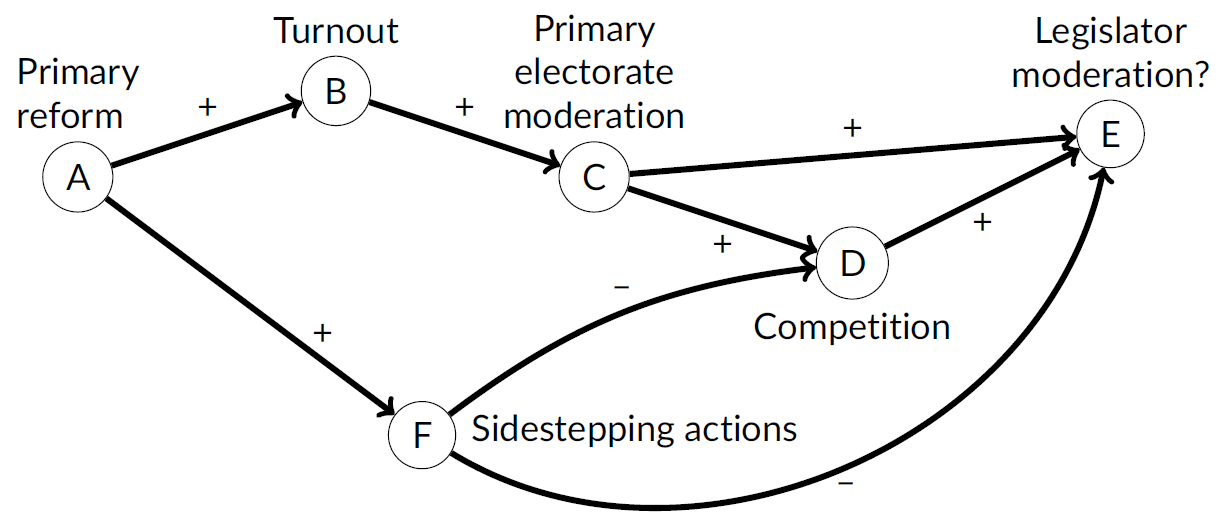Sidestepping primary reform and the consequences of partisan primaries
Many believe primary elections distort representation in American legislatures because unrepresentative actors nominate extremist candidates. Advocates have reformed primaries to make it easier for more citizens to participate and more difficult for parties to control the process. They have hoped this will improve representation.
Empirical evidence, however, is quite variable as to the effects of reform. Some research finds effects of reform while others fail to detect much consequence. Why do we have such a hard time nailing down the effects of primary elections?
In “Sidestepping Primary Reform: Political Action in Response to Institutional Change” (Political Science Research and Methods), I argue that consequences of primary reform are sometimes mitigated by political actors who circumvent reform via other pathways of influence.
Because actors can sidestep reform, the total effect of changes to primary institutions is more than the direct effect of reform. Reforms have multiple and varied consequences on the choices of political actors.
Here’s my DAG of what I think is going on:

The paper presents difference-in-differences analysis of primary rule changes in the American states from 1992 to 2014. I consider multiple outcomes.
-
I show that more open rules and implementation of nonpartisan primaries increase turnout in primary elections on order of 1.5 to 6 points. As reformers argued, more open rules increase rates of participation in nomination contests.
-
I show reforms also increase campaign contributions from individuals to political candidates. I estimate increases on the order of 9 to 21 percent in response to reform.
-
Reforms do not, however, appear to have increased competition at primary elections. I find no effect on winning primary vote margin, number of contested primaries, or number of candidates in the contests. This suggests the increases in contributions are not because of more candidates or more competition.
These findings suggest actors substitute action across avenues of political influence to limit effects of institutional reform. Those individuals who are aggrieved by the direct consequences of reform take countervailing action. Countervailing actions complicate the total effect of reform, which is why political science analysis of primary elections comes to varying conclusions depending upon setting.